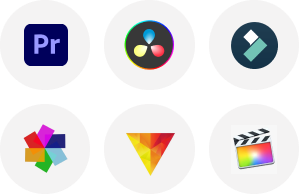A pitch deck is a critical tool for businesses, startups, and entrepreneurs who seek to secure investment, sales, or partnerships. TVS Cube’s best agency pitch deck services offer a concise presentation that summarizes your financial projections, market potential, business ideas, and more. Creating compelling pitch decks can be the difference between securing funding and missing out. In this article, we will understand the pitch deck meaning, its benefits, and guide you on how to craft an effective pitch deck that attracts and convinces your targeted audience.
Pitch Deck Definition:
A pitch deck is a short presentation, often created utilizing PowerPoint, Keynote, or similar software, employed to offer your audience a quick overview of your business plan. It typically covers essential elements such as the mission of your company, business model, market opportunity, product or service, competitive landscape, financials, and team. The objective of a pitch deck is to draw investment by convincing potential investors of the viability and future growth and expansion of your business. Most pitch decks are around 15-24 slides long and are utilized during meetings with investors, demo days, or as a part of the initial screening process by accelerators.
Benefits of Pitch Deck:
Clear Communication:
A pitch deck lets you to share your business idea clearly and concisely. It enables present complex concepts in a visually engaging way, making it easier for potential investors or stakeholders to understand your concept.
Professional Presentation:
A well-designed and effective pitch deck shows professionalism and attention to detail. It can make a powerful first impression, showcasing your dedication and the sincerity of your business proposition.
Engagement and Interest:
Visuals, graphs, and brief text in a pitch deck can grab the audience’s attention and hold their interest. An engaging presentation allows share your passion and enthusiasm for the project.
Structured Approach:
A pitch deck offers a structured framework to discuss your business model, market opportunity, competitive landscape, and financial projections. This organization allows ensure you cover all important elements without missing vital information.
Facilitates Discussion:
A pitch deck serves as a conversation starter, fostering dialogue between you and your audience. It can prompt questions and discussions that may lead to useful insights and feedback.
Showcases Market Potential:
Customer personas, and competitive analysis, a pitch deck emphasizes the potential for growth and profitability, allowing you to convince investors of the viability of your business by including market research.
Supports Funding Efforts:
An effective pitch deck is important for attracting investors. It summarizes your funding requirements, the intended use of funds, and the potential return on investment, increasing the probability of securing financing.
Visual Storytelling:
A pitch deck helps you to tell a captivating story about your brand and its journey. Storytelling features can help create a dynamic connection with the audience, making your pitch more unique.
Focus on Key Metrics:
You can emphasize key performance indicators (KPIs) and milestones, showing your business’s progress and future goals. This data-driven technique can reassure investors about your development trajectory.
Adaptability:
A pitch deck can be customized for various audiences, whether it’s investors, partners, or clients. This flexibility helps you to highlight factors that matter most to each specific group.
Enhanced Confidence:
Presenting a polished pitch deck can increase your confidence during meetings. Knowing you have solid visual assistance can help you communicate more effectively and handle questions or objections with ease.
Record of Presentation:
Your pitch deck, after the presentation, can serve as a reference for both you and your audience. It provides a tangible document that highlights the discussion, making it easier to follow up on key points.
How to make Effective Pitch Deck?
Understand the Audience:
It is crucial to understand your targeted audience before beginning to design pitch deck template. Tailor your pitch deck to address the specific circumstances and interests of your specific audience. Different audiences have different preferences:
⦁ Investors: Interested in the market opportunity, financial potential, and the ability of your team to execute.
⦁ Potential Clients: Focused on how your product or services solve their issues and provide value.
⦁ Partners: Focused on strategic benefits, synergy, and mutual growth opportunities.
Structure the Pitch Deck:
An effective pitch deck often includes these key sections:
Introduction:
⦁ Company Name: Clearly state your company’s name and logo.
⦁ Tagline: A short, memorable tagline that encapsulates what you do.
Problem Statement:
⦁ Identify the Problem: Clearly articulate the problem or pain point that your business addresses. Use real-world examples or data to illustrate why this problem is significant.
⦁ Emphasize Impact: Show how the problem affects your target audience, emphasizing the urgency or scale.
Solution:
⦁ Present Your Solution: Describe your product or service and how it effectively solves the problem you’ve outlined.
⦁ Unique Selling Proposition (USP): Highlight what makes your solution unique compared to existing alternatives.
⦁ Benefits: Explain the specific benefits and advantages your solution offers.
Market Opportunity:
⦁ Market Size: Provide data on the size of the market and its growth potential. Use credible sources and present figures in a clear, compelling way.
⦁ Target Audience: Define your target market segments and explain why they are the right audience for your solution.
⦁ Market Trends: Highlight any relevant market trends or dynamics that support the need for your solution.
Product/Service Overview:
⦁ Features and Functionality: Detail the main features and functionalities of your product or service.
⦁ Demo / Screenshots: Include visuals, screenshots, or a short demo video to give a tangible sense of what your product looks like and how it works.
⦁ Development Stage: Mention the current stage of development and any milestones achieved.
Business Model:
⦁ Revenue Streams: Explain how your business makes money. Common models include subscription fees, one-time purchases, licensing, and advertising.
⦁ Pricing Strategy: Outline your pricing structure and how it aligns with market expectations.
⦁ Sales Channels: Describe how you plan to reach and sell to your customers.
Go-to-Market Approach:
⦁ Marketing Plan: Describe your strategy for promoting and acquiring customers. This could include digital marketing, partnerships, events, and more.
⦁ Sales Strategy: Outline your approach to selling your product or service, including any sales teams or tactics you plan to employ.
⦁ Milestones: Set clear goals and timelines for your marketing and sales efforts.
Competitive Analysis:
⦁ Competitors: Identify key competitors and provide a brief overview of their strengths and weaknesses.
⦁ Competitive Advantage: Explain what sets your business apart from the competition and how you plan to maintain this advantage.
⦁ Market Positioning: Show how you position your business in the market relative to competitors.
Financial Projections:
⦁ Revenue Forecast: Provide projections for your revenue over the next 3-5 years.
⦁ Expenses: Outline your major expense categories and anticipated costs.
⦁ Profitability: Show projected profit margins and break-even analysis.
⦁ Funding Requirements: If seeking investment, specify how much funding you need and how it will be used.
Team:
⦁ Key Members: Introduce the core members of your team and their relevant experience.
⦁ Roles and Responsibilities: Describe each team member’s role and how their expertise contributes to the business’s success.
⦁ Advisors: Mention any advisors or industry experts who are supporting your venture.
Vision and Roadmap:
⦁ Long-Term Vision: Articulate your long-term goals and vision for the company.
⦁ Milestones: Outline key milestones and achievements you plan to hit in the future.
⦁ Strategic Plan: Describe the strategic initiatives you’ll undertake to reach your goals.
Call-to-Action:
⦁ Summary: Briefly recap the key points of your pitch.
⦁ Call to Action: Clearly state what you’re asking for—whether it’s funding, a meeting, or a partnership.
⦁ Contact Information: Reiterate how the audience can get in touch with you.
Design Tips for Your Pitch Deck:
⦁ Keep it Simple: Use clear, concise text and avoid overcrowding slides with information.
⦁ Visuals Matter: Incorporate high-quality visuals, graphics, and charts to make your points clearer and more engaging.
⦁ Consistency: Maintain a consistent design throughout the deck, including colors, fonts, and layouts.
⦁ Engaging Content: Use storytelling techniques to make your pitch compelling and memorable. Connect with your audience emotionally and logically.
Mistakes to Avoid:
⦁ Overloading Information: Avoid overwhelming your audience with too much detail. Focus on key points and keep it concise.
⦁ Lack of Focus: Ensure each slide serves a purpose and contributes to your overall narrative.
⦁ Ignoring Design: A poorly designed can detract from your message. Invest time in creating a professional, visually appealing presentation.
⦁ Neglecting the Audience: Tailor your pitch to address the specific needs and interests of your audience.
⦁ Skipping Financials: If you’re seeking investment, ensure your financial projections are realistic and well-prepared.
Finalizing and Presenting Your Pitch Deck:
Review and Revise:
Seek feedback from mentors, colleagues, or advisors and make necessary revisions.
⦁ Prepare for Q&A: Be ready to answer questions and provide additional details about any aspect of your pitch.
⦁ Practice Your Delivery: Rehearse your presentation multiple times to ensure confidence and fluency.
Conclusion:
Crafting an effective and compelling pitch deck a science or an art. TVS Cube, a pitch deck design company, provide great pitch deck services require you to distill your business idea into an effective narrative while providing the essential details to support your claims. You will be well-positioned to make a robust impression and acquire your goals by following these guidelines and putting in the effort to craft a professional and dynamic pitch deck.
FAQs:
.
1.What are pitch decks?
Pitch deck visually presents business ideas or projects to investors, covering problem, solution, market, model, team, projections, and funding request.
2.What is the purpose of consulting pitch decks?
Consulting pitch decks are designed to effectively convey the significance and capabilities of a consulting firm to potential clients and investors.
3.What is an automation pitch deck?
An automation best pitch deck examples and a strategic presentation used by startups and companies to showcase their automation solutions to potential investors, clients, or partners
4.What is the pitch deck format?
A pitch deck is a type of presentation designed specifically to propose an idea, product, solution, or opportunity to potential clients, investors, or partners.


















